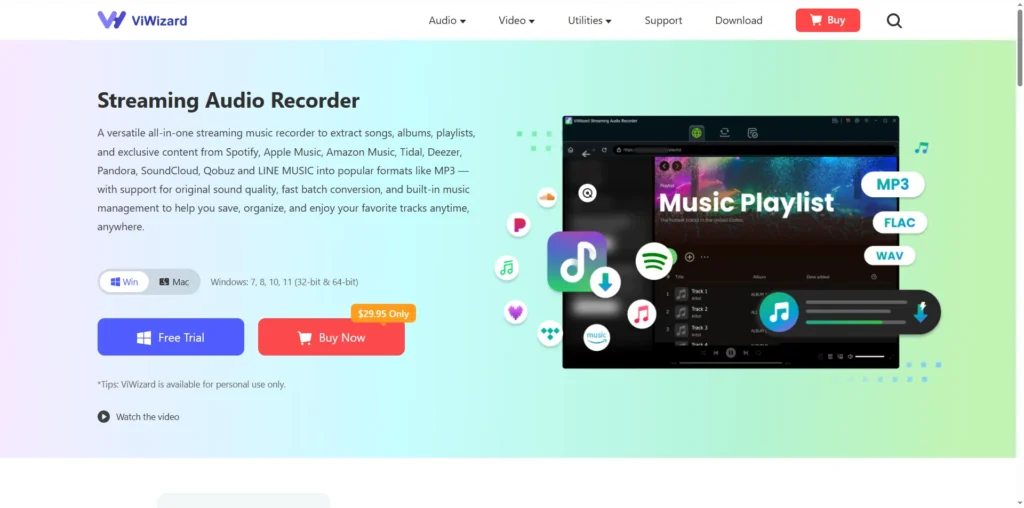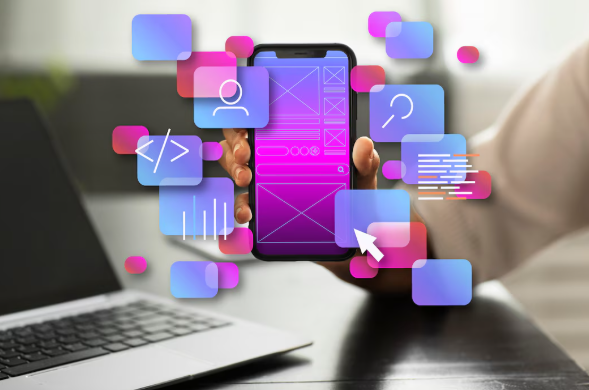Introduction
Welcome to our exploration of Grocery App Development—a journey into the tech-driven evolution of the way we shop for essentials. In today’s fast-paced world, Grocery Delivery Apps have emerged as the epitome of convenience, reshaping the traditional shopping experience.
This blog will unravel the essentials of Grocery Delivery App Development, touching on key elements like user-friendly interfaces, robust backend structures, secure payment gateways, and the infusion of advanced technologies such as artificial intelligence and machine learning.
Geared towards entrepreneurs, developers, and curious consumers, we aim to provide insights from ideation to app deployment, offering a comprehensive understanding of the on-demand grocery delivery sector.
What Is a Grocery Delivery Mobile App?
A Grocery Delivery Mobile App is a digital platform that enables users to order groceries online and have them delivered to their doorstep. These apps typically feature user-friendly interfaces, extensive product catalogs, and secure payment options. Users can browse products, select items, and schedule delivery, enhancing convenience and saving time.
Grocery Delivery Apps connect consumers with local supermarkets or dedicated delivery services, streamlining the traditional grocery shopping process. These apps have become increasingly popular, offering a convenient solution for busy individuals who prefer the ease of online ordering and home delivery for their everyday essentials.
Top 5 Grocery Delivery Apps in 2023
Instacart:
Instacart continues to lead the grocery delivery market in 2023, offering a vast selection of products from local stores. With its user-friendly app, customers can seamlessly order groceries and household items for same-day delivery. Instacart’s success lies in its efficient delivery network and partnerships with various retailers, providing users with a diverse and convenient shopping experience.
Postmates:
Renowned for its on-demand delivery services, Postmates extends its reach to groceries in 2023. The app allows users to order not only from supermarkets but also from local convenience stores and specialty shops. Postmates stands out with its quick delivery times and a broad range of available items, making it a go-to choice for users seeking variety and prompt service.
Careem:
Expanding its services beyond ride-sharing, Careem enters the grocery delivery scene in 2023. Operating primarily in the Middle East, Careem’s app integrates grocery shopping seamlessly into its platform. With a focus on reliability and quick deliveries, Careem’s grocery service caters to users in the region, providing a holistic solution for their daily needs.
Big Basket:
As a major player in the Indian market, Big Basket maintains its position as a top choice for grocery delivery. Offering an extensive range of products, including fresh produce and pantry staples, Big Basket ensures timely deliveries and quality service. The app’s popularity stems from its commitment to meeting diverse consumer needs and providing a hassle-free shopping experience.
FreshDirect:
FreshDirect stands out as a top-tier grocery delivery app in 2023, known for delivering fresh, high-quality produce and groceries. Serving primarily in the United States, FreshDirect emphasizes farm-to-table freshness and offers a curated selection of organic and locally sourced products. Its commitment to quality and a straightforward online shopping experience positions it as a preferred choice for discerning consumers.
Key Features to be Used in Grocery App Development
Secure Payment Gateway:
Implementing a secure payment gateway is paramount in grocery app development. This feature ensures that users can make transactions with confidence, safeguarding their financial information. Integration with trusted payment methods and encryption protocols enhances the app’s credibility, fostering trust among users and contributing to a seamless and secure checkout experience.
Delivery Tracking:
The inclusion of real-time delivery tracking is a key feature that enhances the user experience. Providing customers with live updates on the status and location of their orders instills transparency and anticipation. Users can track their deliveries from the moment of purchase to the final arrival at their doorstep, reducing anxiety and increasing overall satisfaction with the app.
Personalized Recommendations:
Offering personalized recommendations based on user preferences, purchase history, and browsing patterns enhances the app’s engagement and encourages repeat business. By leveraging data analytics and machine learning algorithms, grocery apps can suggest relevant products, promotions, and deals, creating a tailored shopping experience that meets individual needs and preferences.
Barcode Scanning:
Barcode scanning functionality streamlines the shopping process, allowing users to quickly add items to their cart by scanning product barcodes. This feature not only expedites the shopping experience but also ensures accuracy in product selection. Users can easily verify items, view detailed product information, and make informed decisions, contributing to a more efficient and user-friendly app interface.
Integration with Loyalty Programs:
Integrating the grocery app with loyalty programs enhances customer retention and incentivizes repeat business. Users can earn rewards, discounts, or exclusive offers based on their purchasing behavior. This feature fosters customer loyalty, encouraging users to choose the app for their grocery needs consistently. Seamless integration with loyalty programs creates a mutually beneficial relationship between the app and its users.
Crafting a Roadmap for Grocery Delivery App Success
Conducting In-Depth Market Research:
Before embarking on development, conduct thorough market research to identify consumer needs, preferences, and competitors. Understanding the market landscape is crucial for tailoring your grocery delivery app to meet specific demands and stand out in a competitive environment.
Strategizing Feature Planning:
Strategize the features of your app based on the market research findings. Prioritize key elements such as secure payment gateways, delivery tracking, and personalized recommendations. A well-thought-out feature plan ensures that your app not only meets user expectations but also provides a unique value proposition in the market.
Crafting Intuitive UI and UX Design:
The success of a grocery delivery app hinges on a user-friendly interface and seamless user experience. Invest time in crafting an intuitive design that simplifies the shopping process. Clear navigation, visually appealing layouts, and a straightforward checkout process contribute to a positive user experience and encourage app retention.
Executing the Development Phase:
With a comprehensive feature plan and design in place, enter the development phase. Collaborate with skilled developers to bring your app to life, ensuring that it is robust, scalable, and capable of handling the complexities of real-time transactions, delivery tracking, and user interactions.
Conducting Rigorous Testing:
Prior to launch, conduct thorough testing to identify and rectify any bugs or issues. Test the app’s functionality, security, and performance under various scenarios. Rigorous testing guarantees a smooth and reliable user experience, preventing potential setbacks and negative reviews upon launch.
Strategic Launch Planning:
Plan the launch of your grocery delivery app strategically. Consider factors such as target market, promotional campaigns, and partnerships with local retailers. A well-executed launch creates a buzz around your app, attracting initial users and laying the foundation for long-term success.
Embracing Continuous Improvement:
Post-launch, embrace a culture of continuous improvement. Gather user feedback, monitor app performance, and be agile in implementing updates and enhancements. Staying attuned to user needs and technological advancements ensures that your grocery delivery app remains competitive and evolves with changing market dynamics
Business Models for On-Demand Grocery Delivery App
Aggregator Model:
In the aggregator model, the on-demand grocery delivery app serves as a platform that collaborates with multiple local grocery stores. Customers can browse through a variety of products from different stores within the app, and the aggregator coordinates the delivery. This model offers a wide selection to users while creating a partnership ecosystem with local retailers.
Inventory-Based Model:
The inventory-based model involves the on-demand grocery delivery app maintaining its inventory of products. This allows for better control over stock, quality, and delivery. The app acts as its own retailer, streamlining the purchasing process and ensuring a consistent user experience with a standardized inventory.
Hybrid Model:
Combining elements of both aggregator and inventory-based models, the hybrid model offers a versatile approach. The app can maintain its inventory for certain popular or essential items while also partnering with local stores for a broader selection. This hybrid approach allows for flexibility and scalability in meeting customer demands.
Subscription-Based Model:
The subscription-based model involves users paying a recurring fee for premium services, such as free deliveries, exclusive discounts, or access to special promotions. This model encourages customer loyalty and provides a predictable revenue stream for the on-demand grocery delivery app.
White Label Solution:
In the white label model, the on-demand grocery delivery app provides its technology and infrastructure to local grocery businesses. These businesses can then brand the app as their own, leveraging the established platform for their delivery services. This model allows smaller retailers to enter the digital space without building an app from scratch.
Technology stacks required for Grocery Delivery App
Frontend Technologies:
React Native or Flutter: Cross-platform frameworks for developing a unified app experience on iOS and Android.
JavaScript/TypeScript: Core programming languages for frontend development.
Backend Technologies:
Node.js or Django: Server-side frameworks known for scalability and real-time capabilities.
Express.js or Flask: Lightweight frameworks to build the application’s backend structure.
Database Management:
MongoDB or MySQL: Database systems to manage and store app data efficiently.
Firebase Realtime Database: For real-time synchronization of data across devices.
How Much Does it Cost to Build a Grocery Delivery App?
The cost per hour for developers varies globally, with rates ranging from $20 to $150 per hour, depending on location and expertise. Considering these factors, a basic Grocery Delivery App can start from $20,000 to $50,000. A more feature-rich and complex app may range from $50,000 to $100,000 or more.
It’s crucial to collaborate with a reliable development team, like Moon Technolabs, for accurate cost estimations and to ensure the successful development and deployment of your Grocery Delivery App. The final cost will be influenced by your app’s unique requirements and the specific features you choose to include.
Conclusion
In conclusion, the future of convenience lies in the dynamic realm of Grocery App Development Company. As technology reshapes the grocery shopping experience, these apps play a pivotal role in meeting the demands of a fast-paced world.
From the exploration of top apps in 2023 to key development features and business models, this comprehensive guide provides valuable insights for entrepreneurs, developers, and consumers alike. Embracing continuous improvement and strategic planning, coupled with the right technology stack, pave the way for success in the evolving landscape of on-demand grocery delivery.
Collaborate with trusted partners like Moon Technolabs to turn these insights into reality, offering a seamless and convenient grocery shopping experience for users worldwide.
FAQs
- What features should a grocery app have?
A grocery app should include essential features like a user-friendly interface, secure payment gateways, real-time delivery tracking, personalized recommendations, barcode scanning, and integration with loyalty programs for an enhanced and convenient shopping experience.
- Which are the most popular Grocery delivery apps?
As of 2023, some of the most popular grocery delivery apps include Instacart, Postmates, Careem, Big Basket, and FreshDirect. These apps offer diverse products, efficient delivery services, and unique features, catering to the evolving preferences of users worldwide.
- How many features should an app have?
The number of features in an app depends on its purpose and complexity. A basic grocery app may start with essential features, while a comprehensive one could include advanced functionalities like subscription models, real-time tracking, and personalized recommendations. Striking a balance between user needs and app efficiency is key.

Top Online Only Banks You Can Trust in the USA

Business Checking Account Options for Modern Entrepreneurs

Why Businesses Require Inspection of an LPG Tank

Accelerating drug discovery through the DEL-ML-CS approach

AI in Marketing Is No Longer a Buzzword — It’s the Strategy

Unlock Your Music: How to Download Apple Music to MP3 with ViWizard

Top 10 Mobile App Development Companies in Dallas to Watch in 2026










